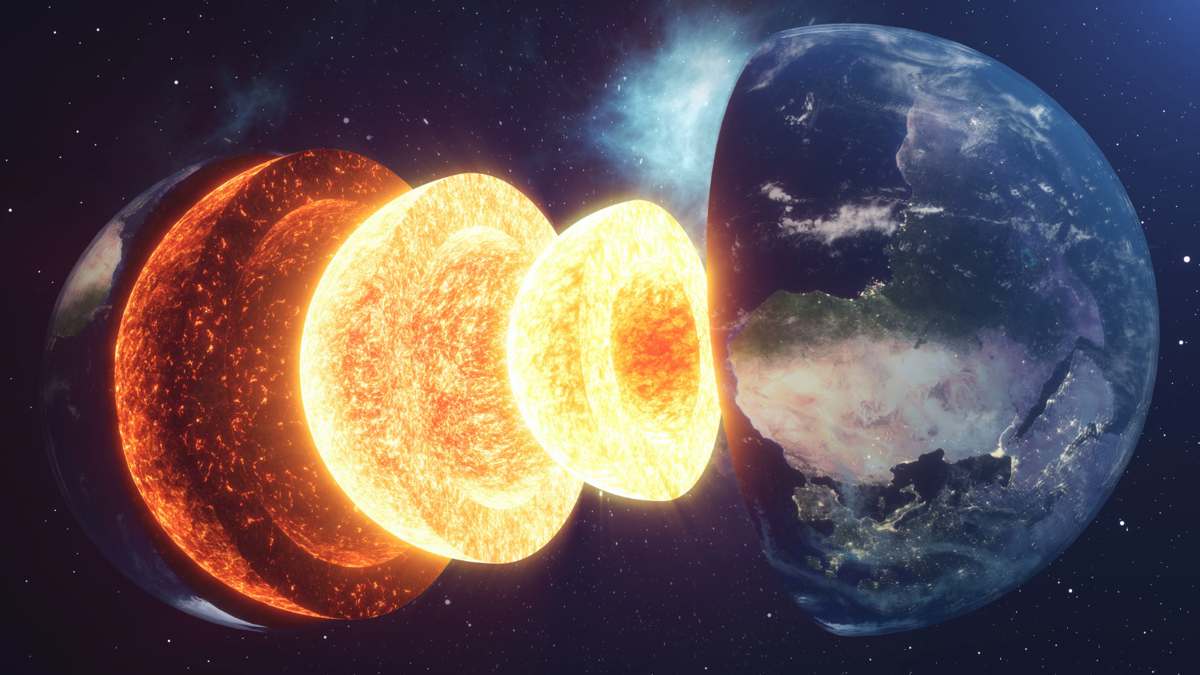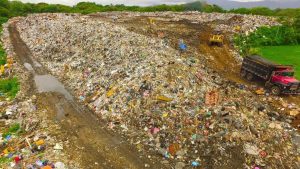Beneath our feet lies a world even more mysterious than outer space. Scientists have long focused their attention upwards, towards stars and planets, but a recent discovery is shifting that gaze downward. Deep within the Earth, two colossal structures, each rising up to 900 kilometers high and spanning thousands of kilometers, have recently captivated the scientific community. These formations, hidden at the base of Earth’s mantle, could significantly impact the stability of the planet’s magnetic field—our critical natural shield against harmful solar radiation and cosmic threats.
Imagine two massive continents, invisible yet profoundly influential, floating inside Earth. This discovery challenges everything we previously assumed about our planet’s internal makeup and has far-reaching implications for humanity’s future. As researchers dive deeper into this phenomenon, one question stands out: how could these hidden structures alter our lives on the surface?
What exactly are these mysterious structures beneath Earth’s surface?
Known scientifically as Large Low Velocity Provinces (LLVPs), these vast anomalies are characterized by their unusual ability to slow seismic waves passing through them. This unique property suggests they’re made from distinctly different material than the surrounding mantle. Although first identified in the 1980s through seismic data, their true nature and purpose have remained unclear until recent studies.
Thanks to groundbreaking research led by James Panton and his team, we now know that these two massive structures differ significantly from each other. The Pacific LLVP is dense, compact, and primarily composed (approximately 53%) of ancient, recycled oceanic crust. Conversely, the African LLVP appears lighter, older, and more enigmatic in composition.
This groundbreaking insight suggests these structures were slowly created over billions of years through a process known as subduction, where oceanic plates sank deep into the mantle, accumulating layer after layer. This geological recycling has sculpted these massive underground continents, significantly reshaping our understanding of Earth’s inner dynamics.
How could these hidden structures affect Earth’s magnetic field?
Most people learn early that Earth’s magnetic field is generated in its liquid outer core, where swirling iron acts like a giant dynamo. However, these recently confirmed LLVPs could profoundly influence this critical mechanism. Researchers now suspect these structures interfere with the natural and uniform heat dissipation from Earth’s core, potentially causing instability within the mantle.
This thermal disturbance could directly affect the strength and stability of Earth’s magnetic field. In fact, evidence already links the African LLVP to known magnetic anomalies observed in its region. If these structures continue to influence Earth’s internal dynamics, our protective magnetic shield could weaken significantly.
Why does the magnetic field matter so much?
A stable magnetic field is essential to life on Earth, serving as an invisible barrier that deflects harmful cosmic radiation and intense solar storms. Without it, our planet would rapidly become inhospitable. A weakened magnetic field, as potentially influenced by these massive internal structures, could expose humanity and all living organisms to increased radiation risks, altering climate, health, and ecosystem stability worldwide.
Key differences between the African and Pacific structures revealed
The Pacific LLVP is situated beneath a region famously known for intense geological activity—the Ring of Fire. Its dense structure has formed over millions of years through relentless tectonic action, giving it a solid, compact composition. In stark contrast, the African LLVP presents an ancient, less dense, and somewhat unstable structure. Scientists speculate this could relate to major geological shifts, including the breakup of Earth’s ancient supercontinents.
These distinctions provide critical insights into Earth’s evolutionary history and underscore how diverse geological processes beneath our feet might shape surface phenomena.
How could these findings impact humanity’s future?
Currently, the precise impacts of these LLVPs remain uncertain. However, scientists have identified three potential consequences that could profoundly affect life on Earth:
Firstly, increased likelihood of magnetic pole reversals. Such reversals, historically documented, could disrupt navigation systems, satellite communications, and electronic infrastructure globally.
Secondly, heightened geological instability could trigger more frequent and severe earthquakes and volcanic eruptions, presenting new challenges for human safety and preparedness.
Lastly, a weakened magnetic shield would expose Earth’s surface to higher levels of solar radiation, potentially affecting climate patterns, agriculture, and human health.
Redefining our understanding of Earth’s stability
This groundbreaking research reminds us that Earth is far from static. Hidden thousands of kilometers beneath our feet, these mysterious structures actively influence our planet’s destiny. As we continue to uncover the secrets held deep within our world, it’s clear that understanding these colossal internal forces is not merely academic—it is essential to preparing humanity for the future.
Earth, previously considered predictable and stable, reveals itself as a dynamic, ever-changing planet. Beneath the surface, powerful unseen forces are continually reshaping our environment. This new perspective urges us to explore deeper, learn more, and respect the complexities of our incredible home planet.



